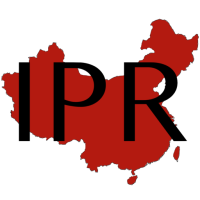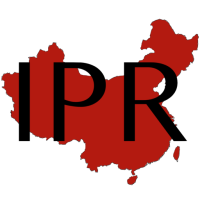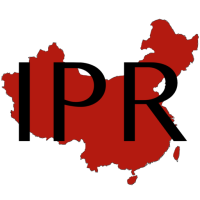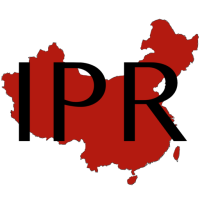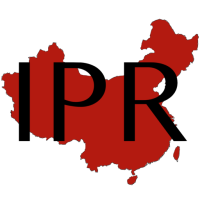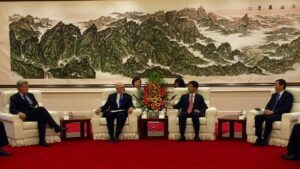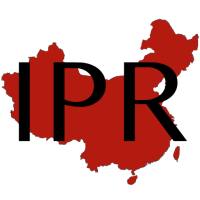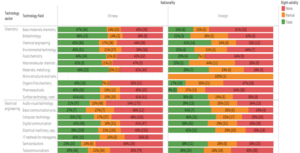
USTR recently released the National Trade Estimates Report (2021) (the “NTE Report”) on March 31, 2021. This report will shortly be followed by the Section 301 Report regarding IP on April 30, 2021. Because it is trade- and not IP-focused, it is likely to be overlooked. The NTE Report also provides a useful insight into the role that IP will likely plan in overall trade diplomacy. By contrast, the Section 301 Report is also initially ignored in China as it conflicts with the week-long celebrations around National IP Day (April 26).
As with all of USTR’s various trade reports, there is a high degree of repetition from year to year. As discussed below, although many issues may remain unresolved, other issues continue to subsist in ways that may not reflect their appropriate priority.
In its discussion of trade-related concerns, the NTE Report continues to refer extensively to “Made in China 2025” (2015-2025). However, MIC 2025 is now more than 60% completed. It is also hardly referred to in China anymore. By contrast, IP-specific plans, such as the National IP Strategy, are not discussed. Industrial policies of various kinds often have significant but difficult to see impact on the conduct of IP agencies and Chinese rightsholders. Here are some of the national plans that Prof. Barry Naughton identified in his book on The Rise of China’s Industrial Policy, 1978 – 2020:
Table 4.1: Industrial Policy Timeline
| 2005 | 11th Five Year Plan |
| 2006 | Medium Term Science & Technology Plan |
| 2010 | Strategic Emerging Industries |
| 2011 | 12th Five Year Plan |
| 2015 | Made in China 2025 Internet Plus |
| 2016 | National Plan SEIs 13th Five Year Plan |
| 2017 | Military-Civilian Fusion Plan Artificial Intelligence Plan AI 3-Year Action Plan |
| 2018 | Other 3-Year Action Plans Intelligent Photovoltaics; Intelligent Shipbuilding Cloud Computing; Information Consumption |
| 2019 | Internet and Services |
Another issue that subsists is the tax preferences afforded by China’s High and New Technology Enterprise (HNTE) program. HNTE tax preferences have long been a target of USG trade diplomacy. The NTE Report notes that “China continues to pursue myriad policies that require or favor the ownership or development of intellectual property in China” by providing a tax preference under the HNTE program.
In my view, there has never been anything inherently wrong with requiring the “ownership…. of intellectual property in China” to support a tax preference. Otherwise, the counterfactual of China not requiring proof of ownership of valid IP in China to support the grant of a tax preference could lead to China subsidizing infringing enterprises. What China should not require is that the owner is a Chinese entity. The US-China Business Council made that important distinction in its 2015 position paper on HNTE when it noted that China should “review and revise…tax related laws and regulations to eliminate location-specific IP ownership.”
IP rights are territorial. There would be little point in China’s requiring proof of ownership of a Swedish patent to support a tax preference for a product made in China. A Chinese patent is needed to demonstrate ownership of the relevant technology. However, parties of any nationality should be able to apply to own their own intellectual property. USG policies should clearly address discrimination based on ownership of a right (national treatment), which is a WTO requirement. A second, important consideration is that the HNTE tax program may no longer be the primary program for subsidizing innovative manufacturing, as China’s R&D super deduction plays an important role.
The NTE Report also criticizes China’s efforts to clean up measures that favor government procurement for indigenously innovated products, noting the years of frustrated diplomacy and commitment. According to the report:
China agreed to de-link indigenous innovation policies at all levels of the Chinese Government from government procurement preferences, including through the issuance of a State Council measure mandating that provincial and local governments eliminate any remaining linkages by December 2011…At the November 2016 JCCT meeting, in response to U.S. concerns regarding the continued issuance of scores of inconsistent measures, China announced that its State Council had issued a document requiring all agencies and all subcentral governments to “further clean up related measures….”
This paragraph is confusing to me. What is a State Council “measure”? Is a State Council “document” different from a “measure”? What is the legal status and authority of these documents under the Law on Legislation 立法法? Most likely, USTR was saying that it was encouraging the State Council to issue a State Council Regulation (法规fagui). Under the Law on Legislation, this would then have been superior to a local legislation addressing government procurement practices. Precise terms should be used to insure legal compliance in trade negotiations.
Chinese laws regarding the binding nature of legal enactments are also imprecisely applied elsewhere in the NTE Report. For example, the NTE Report notes that “China had committed to issue judicial guidance to strengthen its trade secrets regime.” I do not know what “judicial guidance” is. If a binding statement of law is required, it should be in the form of a “judicial interpretation” or perhaps a “guiding case.” An example of where USTR is inappropriately precise is its description of the Phase One Agreement as “significantly strengthen[ing] protections for trade secrets and enforcement against trade secret theft in China.” The Phase 1 Agreement requires additional legal action for its implementation; by itself, it strengthened no law, regulation or rule. Prof. Jamie Horsley has noted that “[d]eeper understanding of Chinese law could help U.S. authorities avoid adopting policies and targeting issues that are based on misapprehension,” and that “[m]isunderstanding concerning the binding force of various Chinese documents” has been a continuing problem faced by US trade officials. The NTE Reports demonstrates that these problems continue largely unabated.
The NTE Report acknowledges that “the United S
tates … pursu[ed] … a successful WTO case challenging certain discriminatory technology licensing measures maintained by China …” See my earlier blogs on this case. Significantly, the US accomplishments in that case were ignored in last year’s Section 301 Report, which noted that the various legislative changes made by China were “under review”. I had wondered why USTR did not previously publicize this successful outcome. I am glad to see this acknowledgment. Full disclosure: while in USG I had been urging bringing this case based on a de jure violation of WTO national treatment obligations for years.
The NTE Report takes no position on the results achieved to date in pharmaceutical-related IP, merely stating that it is “working closely with industry to monitor” developments in this area. On critical issues, such as data protection for pharmaceuticals, we are only told that this was intended to be a subject for “future negotiations.” The NTE Report similarly fails to discuss the troubling evolving legal environment for patent linkage, including an elevated role for administrative agencies in determining infringement, and a sequence of legislation where CNIPA and NMPA may have put the legislative “cart before the horse” in drafting Rules (bumenguizhang 部门规章) or Normative Documents (guifanxing wenjian 规范性文件) in advance of State Council Regulations (fagui 法规). It would be useful to know what is the state of those negotiations and if there will be an opportunity to provide suggestions for them.
The NTE Report states that “although China further amended its Anti-unfair Competition Law and its Administrative Licensing Law in April 2019, these amendments still do not fully address critical shortcomings in the scope of protections and obstacles to enforcement.” The actual shortcomings are not identified. Jim Pooley noted that a draft judicial interpretation on trade secrets “seems in some respects to go beyond what was required [of Phase 1].” It would be useful to know what the existing challenges might be.
Regarding the various special campaigns required by China in the Phase 1 Trade Agreement, USTR notes that “China had yet to demonstrate as of March 2021 that it has increased enforcement actions against counterfeits with health and safety risks and at physical markets, increased training of customs personnel or that it has ensured the use of only licensed software in government agencies and SOEs.” A related issue involving administrative enforcement is SAMR’s draft “Provisions on the Protection of Trade Secrets.” These provisions are not discussed in detail. While USTR is committed to “monitoring their effectiveness,” it does not note that administrative and criminal trade secret reforms could impose higher penalties where there is an actor working on behalf of a foreign interest and thereby disproportionately impact foreign companies and their employees. I am also concerned about USTR’s continuing interest in administrative trade secret enforcement. A similar effort by USTR to encouraged increased administrative trade secret enforcement, which was memorialized in a 2013 JCCT commitment, brought limited positive results. I look forward to hearing more about these reports.
There are many other IP-related issues covered in the NTE Report, and many important issues that are not addressed. Considering the vast changes that have occurred in China’s IP regime in the past several years, the US government IP team should be busy in analyzing the changes, engaging China, and sharing concerns with industry. Last year’s Section 301 Report demonstrated noticeable improvements in USTR’s engagement on fundamental market-orientation and rule of law issues, in, for example, its reporting on “poor quality patents,” opposition to the use of the social credit system in IP cases, and the need for increased administrative and judicial transparency. “Transparency” was discussed five separate times in that report, compared to only once in the IP chapter of the Phase 1 Trade Agreement. That 301 Report also laudably noted that ““[a] truly independent judiciary is critical to promote the rule of law and to protect IP rights.” This year, transparency in Chinese law is discussed only outside of intellectual property in the NTE Report. My observation last year was that the Special 301 Report suggested “further distancing [of] the administration from rhetoric and outcomes of December 2018-May 2019 when the primary goal appeared to be strong legal commitments to punish IP infringement without explicit consideration of due process.”
It is concerning that rule of law issues are much less evident in this NTE Report than in last year’s 301 report. One is left speculating about the Administration’s motives through such tools as comparing prior public reports and testimony. An initial comparison could lead one to conclude that the Biden Administration is inclined to believe that commercial rule of law issues are less important to trade policy or that there is no need to phrase Chinese commitments in legally binding language. However the March 1, “ 2021 Trade Policy Agenda and 2020 Annual Report,” highlighted that the Biden administration would be undertaking a “comprehensive strategy and more systematic approach than the piecemeal approach of the recent past” which would include addressing engaging addressing human rights concerns. If this year’s Special 301 Report similarly distances itself from the rule of law issues in last year’s report, it will be a more telling indicator of a shift in USG policy.
I hope that Amb. Tai and her team will continue the focus of last year’s 301 Report on core rule of law and economic issues while at the same time disaggregating some of the poorly structured USTR positions on China’s legal system that have too often marred USTR’s engagement on Chinese legal issues. I also hope that USTR can itself become more transparent in engaging the business and legal communities about its proposals, plans and strategies.
The topic of rule of law and Chinese IP are also likely to figure prominently in a forthcoming conference sponsored by the Harvard Law School Harvard Law School China Law Association (CLA) “Building Bridges over Troubled Waters,” which will be held from Sunday, April 11th to Thursday, April 15th, 2021. The IP session, moderated by Prof. Alford, will be held on April 13 from 8-9 PM EST. I will be speaking along with the Hon David Kappos. Huang Haifeng of Jones Day, and Clete Willems of Akin Gump. Prof. Alford’s seminal book on Chinese IP, “To Steal a Book Is an Elegant Offense,” passionately and persuasively advanced the importance of rule of law in trade policy on Chinese IP matters in the early stages of US-China IP diplomacy. The program is co-sponsored by the Berkeley Center for Law
and Technology. The complete Symposium schedule is found here.
Featured Image: 2012 visit of Prof. Liu Chuntian of Renmin University to the chambers of Chief Judge Rader, CAFC, by Mark Cohen.
- &
- 2016
- 2019
- 2020
- 2021
- Action
- Additional
- Agreement
- AI
- All
- announced
- April
- AREA
- around
- artificial intelligence
- Berkeley
- biden
- business
- Campaigns
- cases
- chief
- China
- chinese
- Cloud
- cloud computing
- commercial
- Communities
- Companies
- competition
- compliance
- computing
- Conference
- continue
- continues
- Council
- credit
- Criminal
- customs
- data
- data protection
- day
- detail
- Development
- DID
- Discrimination
- documents
- Early
- Economic
- employees
- English
- Enterprise
- Environment
- estimates
- Figure
- Focus
- form
- Forward
- Free
- full
- Government
- Governments
- harvard
- Health
- here
- High
- Highlighted
- HTTPS
- human rights
- image
- Impact
- Including
- industrial
- industry
- information
- ING
- Innovation
- intellectual property
- Intelligence
- interest
- Internet
- IP
- issuance
- issues
- IT
- language
- Law
- Laws
- Laws and regulations
- lead
- Legal
- Legal Action
- Legal issues
- Legislation
- Licensing
- Limited
- local
- Long
- manufacturing
- March
- mark
- Markets
- Matters
- measure
- Opportunity
- opposition
- Other
- owner
- patent
- Patents
- Personnel
- pharmaceuticals
- policies
- policy
- Product
- Products
- Program
- promote
- proof
- property
- protect
- protection
- Provincial
- public
- quality
- Regulation
- regulations
- Relationships
- report
- Reports
- response
- Results
- rules
- Safety
- School
- Science
- Share
- shift
- Social
- Software
- Sponsored
- State
- Statement
- States
- Status
- Strategy
- successful
- support
- system
- Target
- tax
- Technology
- theft
- time
- trade
- trade secret
- Training
- Transparency
- treatment
- u.s.
- United
- United States
- university
- us
- us government
- View
- What is
- WordPress
- year
- years

